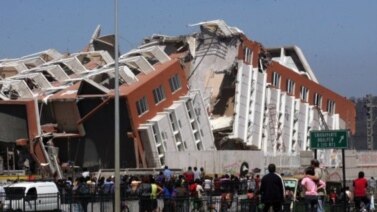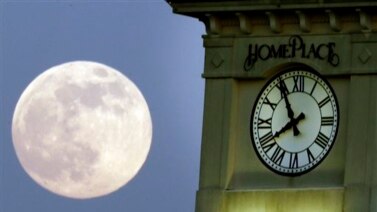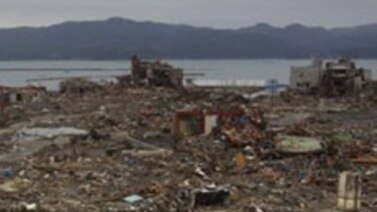
From VOA Learning English, this is Science in the News.
I’m Anna Matteo.
And I’m Christopher Cruise.
Today we report on recent developments in space science. We tell about the growing demand for communications satellites and space-based imaging services. We also tell about China’s first robotic vehicle on the moon. But first, we examine the effect of longer space flights on humans.
How Do Long Periods in Space Affect the Body and Mind?
Human beings have a natural desire to explore the unknown. People with a strong interest in space like to say it is the last place left to explore. But scientists are warning that space exploration for long periods is not going to be easy. They say the human body is not designed to stay in space over an extended period.
The New York Times recently published a report about scientists who are preparing astronauts for a trip to the Moon. The newspaper said the scientists want to make sure that their crews return home in good health. But there are many problems to be solved before people are ready for long trips to the Moon, an asteroid or even the planet Mars.

Humans developed on a planet with a surface that is more than 70 percent water. Our bodies are also about 70 percent water. When there is no gravity that water moves up toward the head, raising pressure in the skull. Arms and legs grow weaker at what is called zero gravity because they no longer need to push against the force of gravity.
Five years ago, astronauts who spent weeks in space reported a change in their eyesight. These astronauts were members of the crew on the International Space Station. Research showed a change in the shape of their eyes. Normally-round eyeballs had become flat during time in space. The research also showed that the right eye was affected more than the left, and that men were more affected than women. Scientists could not find an explanation for the differences.
Bone loss was one of the problems first reported by astronauts returning to Earth after longer stays in space. So scientists designed exercise machines to use on the space station. Tests showed that the exercise equipment helped space travelers keep their bones almost as strong as when they left Earth.
There are other health issues for astronauts who spend a long time in space. They may have problems eating and sleeping. But the biggest health issue is exposure to radiation. On Earth, human beings are protected by the atmosphere and the planet’s magnetic field. In outer space, there is no such protection.
For more than 50 years, the health of American astronauts has been a concern of NASA -- the National Aeronautics and Space Administration. NASA does not let the risk of cancer for its astronauts rise more than three percent during their lifetime. But there is more to be worried about than a possible increased risk of cancer.
On Long Island, New York, scientists have been studying the effect of cosmic rays on mice. The scientists say they have found possible brain damage to the animals.
Another problem for astronauts is the difficulty of exchanging information with people on Earth during long flights. There is no delay now in communicating between astronauts and flight headquarters -- known as Mission Control. But messages between Earth and distant planets will take minutes to arrive.
Mental health is another important issue for long space flights. And, because astronauts will be inside their small spaceship together for months, they must work well as a team. There could be problems if one of the astronauts develops personality issues.
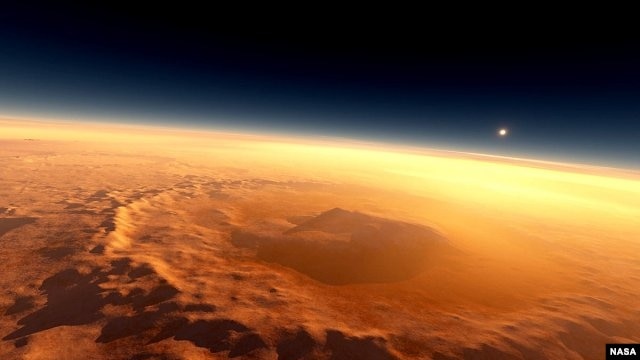
NASA plans to send humans to Mars by 2030. The mission would take about two-and-a-half years. That is almost six times longer than the longest stay in space. One reason NASA extended the life of the International Space Station was to do more medical research on the effects of a longer stay in space.
Starting in 2015, an American astronaut and a Russian cosmonaut are to stay on the space station for one full year. The Russian cosmonaut Valery Polyakov has already stayed longer than a year in space. He worked on the Russian space station Mir in 1994 and 1995.
Scientists say they now have better measuring devices and testing methods. They want to use them to study the changes in the body and mind during long stays in zero gravity. Their research is aimed at learning if such changes in physical condition will remain or will return to normal a few months after they have returned to Earth.
China’s “Jade Rabbit” Explorer: Sleeping on the Moon
Robots in space do not have the health problems of humans, but they can develop operating problems. China’s first Moon explorer landed on the Moon in December. But it developed problems in January.
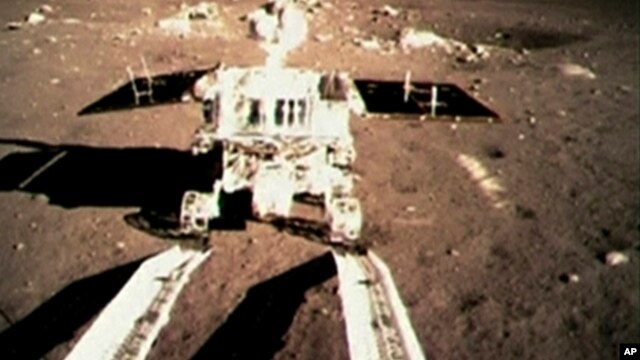
The Chinese news agency Xinhua reported that scientists were working to fix the robotic vehicle, which is known as “Jade Rabbit.” The vehicle is named for a small animal in traditional Chinese stories about a Moon goddess.
China’s State Administration of Science, Technology and Industry for National Defense said the problems were a result of what it called (a) “complicated lunar surface environment.” The agency provided no other information.
But in February, the Jade Rabbit showed signs of life. A spokesman for the program was reported as saying technicians are still investigating the cause of what he called the “mechanical control malfunction.” The problem caused the vehicle to go into a rest or "sleep mode." The Jade Rabbit is designed to enter sleep mode to survive the extreme cold nights on the moon.
The rover came to life briefly on February 23rd before entering sleep mode again. There have been no reports of the Jade Rabbit waking since then. The device remains in its third sleep since landing on the Moon.
Future for Businesses Working in Space Looks Hopeful
Launching rockets into space has become almost commonplace. The demand for communications satellites and space-based image services is growing.
Today, space efforts are a $200 billion a year industry. Joint efforts between governments and businesses are helping to lower costs and increase our understanding of the universe.
The business of space looks good for Orbital Sciences Corporation, a company based in the United States. In January, the company launched its Antares rocket. The rocket was carrying the first of eight planned supply shipments to the International Space Station.
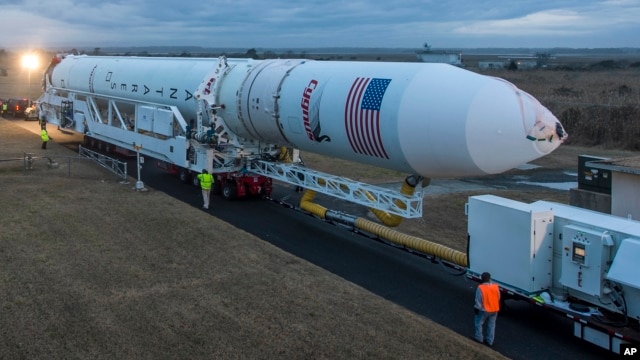
Orbital Sciences is one of two American companies paid by NASA to transport supplies to the space station.
A company called “Arianespace” is a private European space business. Arianespace launched its first satellite 30 years ago. It says 2014 may be its busiest year yet.
Clayton Mowry heads the American division of the company. He says the increase in rocket launches is partly the result of increased demand for space-based technologies. These include extreme high-definition broadcasts and satellite broadband service.
While there is more demand for satellites, the end of NASA's space shuttle program in 2011 has hurt the space industry.
Janice Starzyk works at International Launch Services. She works on education issues at the Washington Space Business Roundtable.
“The shuttle program shutting down was a huge, huge set of layoffs in the industry.”
But even as NASA reduces its spending, other countries have announced plans to explore space. In December, China became just the third country to land a space vehicle on the Moon. A month later, India launched its first communications satellite.
Trying to Prove Space Flight Doesn’t Have to Be Costly
In Denmark, two people are attempting to prove that space flight does not need to be costly. They are using designs that are free to anyone. They are attempting to pay for rocket launches by asking interested people to make a donation to the project.
Kristian Von Bengtson helped start the company, called Copenhagen Suborbitals. He has dreamed since he was a boy of launching a rocket 100 kilometers into space. He wants to launch a rocket built by a private company for less money than expected.
“Everybody believes that space flight -- manned space flight -- can only be done with billions of dollars, and it has to be government-financed. I hope that we can show that you can do it on a shoestring budget. You can pretty much do it yourself.”
Kristian Von Bengtson hopes to launch a rocket carrying astronauts into space by 2020.
Students: Think About Space Careers
As more companies enter the space industry, they will need highly-trained and educated workers. Janice Starzyk says the Space Business Roundtable will continue to urge students to consider careers in space.
"Actually, it’s a major problem in, in most countries of getting young people interested in, in studying engineering, and specifically aerospace engineering.”
She says attendance at her organization’s space academy program has risen over the last three years. She says that as demand increases for rocket launches, so will the demand for highly-trained engineers and other space workers.
This Science in the News was written and produced by Christopher Cruise.
I’m Anna Matteo.
And I’m Christopher Cruise.
You can comment on this story on our website, learningenglish.voanews.com. Join us again next week for more news about science on the Voice of America.
